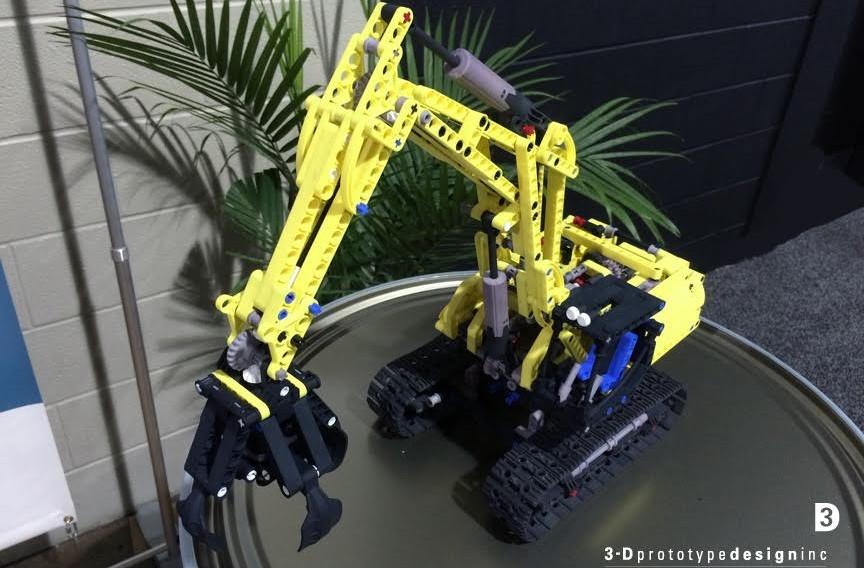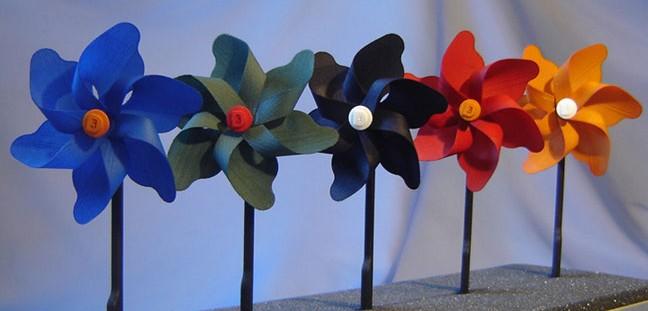 We have seen 3D printed LEGO parts before, but when those parts are printed using a standard FDM 3D printer they are rarely ideal building blocks. Unfortunately the resolution on FDM printers is limited by the basic laws of physics in relation to the surface tension of the material being used. Most plastics, at least those that exist at this point, simply can’t achieve enough liquidity to create the same smooth surface and level of detail that injection molding is capable of. So LEGO parts 3D printed on an FDM printer never fit quite as tightly with each other as traditional LEGO parts.
We have seen 3D printed LEGO parts before, but when those parts are printed using a standard FDM 3D printer they are rarely ideal building blocks. Unfortunately the resolution on FDM printers is limited by the basic laws of physics in relation to the surface tension of the material being used. Most plastics, at least those that exist at this point, simply can’t achieve enough liquidity to create the same smooth surface and level of detail that injection molding is capable of. So LEGO parts 3D printed on an FDM printer never fit quite as tightly with each other as traditional LEGO parts.
But that doesn’t mean that a 3D printed LEGO can’t be just as precise as its injection molded forebears. While there are various post processing methods capable of smoothing striation marks left by FDM 3D printers, they have a tendency to smooth out fine detail as well. FDM printers are relatively inexpensive, and are simply not made to produce objects with a superfine level of detail. At this point there are virtually a dozen variations of 3D printing technology, each with differing advantages, drawbacks and ideal uses. So if you want working LEGO parts, the only real option is a selective laser sintering 3D printing process.
3D Prototype Design Inc. was one of the first companies in North America tho offer 3D printing services, and was the first in Canada. Since 1996 they have provided their customers with some of the top of the line 3D printing technologies available and the company is generally considered one of the industry leaders in rapid prototyping. While their industry has been changing at a rather rapid pace these past few years, they have made a point to stay nimble and offer as many varieties of 3D printing services as their printers can manage.
When they wanted to show off how detailed the parts made with their SLS 3D printers were, they came up with the idea of making a complex LEGO Technic tractor. Not only to show off how good the parts looked, but how strong and usable the parts were.
“Since we wanted potential customers to first and foremost enjoy the fun nature that Lego provides, as well as demonstrate in a cool way that we can easily create real world, useable parts in multiple quantities, this made perfect sense. Honestly, many at the trade show were amazed how close it looked and functioned compared to the traditional manufactured pieces. We had many attendees come to take photos to send to friend, kids and colleagues. Several even heard the ‘buzz’ about our excavator and specifically searched out our booth at this very large trade show just to see it!” explained Annette Kalbhenn, sales manager for 3-D Prototype Design Inc.
The LEGO parts, and the eventual tractor constructed from them, were designed using professional CAD design software Pro/ENGINEER by PTC. 3D Prototype Design technicians created more than 100 different individual 3D models of the LEGO Technic parts. Then about 720 pieces were 3D printed in nylon using their SLS 3D printers.
3D Prototype treated the parts individually with their own post coloring process that made the color of each piece authentic. All in all it took about 73 hours in total to print enough pieces to construct the tractor.
Obviously SLS 3D printing isn’t going to replace traditional mass production methods using injection molding, but clearly the level of durability, strength and detail can be duplicated on a smaller scale. That makes it a pretty affordable option for smaller companies looking to produce a short run of products or parts. Let us know what you think about this project over on our LEGO Tractor forum thread at 3DPB.com.
Subscribe to Our Email Newsletter
Stay up-to-date on all the latest news from the 3D printing industry and receive information and offers from third party vendors.
You May Also Like
3D Printing Financials: Fathom Struggles in Financial Quicksand During Critical Transition
Facing a year of key transitions and financial pressures, Fathom (Nasdaq: FTHM) has filed its annual report for 2023 with the U.S. Securities and Exchange Commission (SEC). The document outlines...
Latest Earnings Overview for Australian 3D Printing Firms Titomic and AML3D
Australian 3D printing manufacturing firms Titomic (ASX: TTT) and AML3D (ASX: AL3) reported their financial results for the period from July to December 2023, marking the first half of their...
3D Printing Webinar and Event Roundup: April 7, 2024
Webinars and events in the 3D printing industry are picking back up this week! Sea-Air-Space is coming to Maryland, and SAE International is sponsoring a 3D Systems webinar about 3D...
3D Printing Financials: Unpacking Farsoon and BLT’s 2023 Performance
In the Chinese 3D printing industry, two companies, Farsoon (SHA: 688433) and Bright Laser Technologies, or BLT (SHA: 688333), have recently unveiled their full-year earnings for 2023. Farsoon reported increases...
































